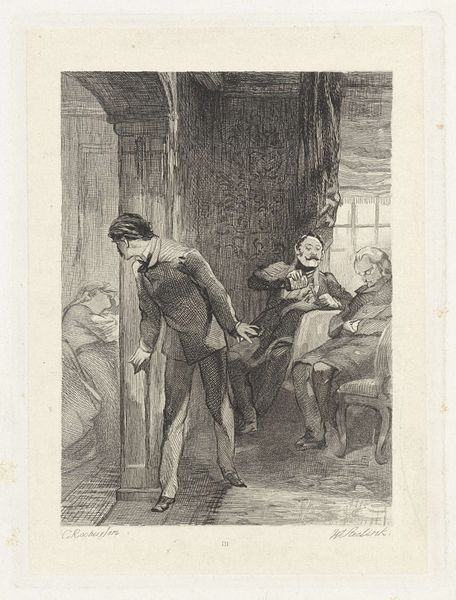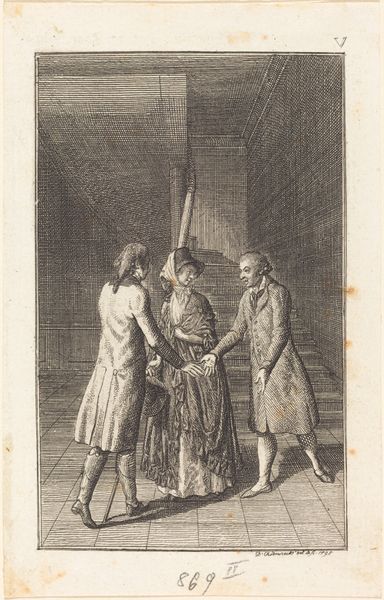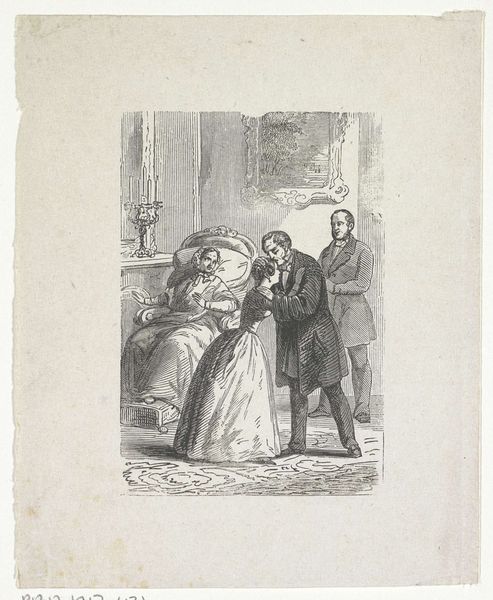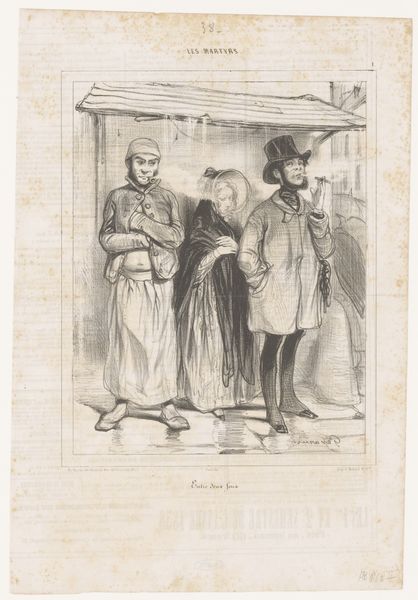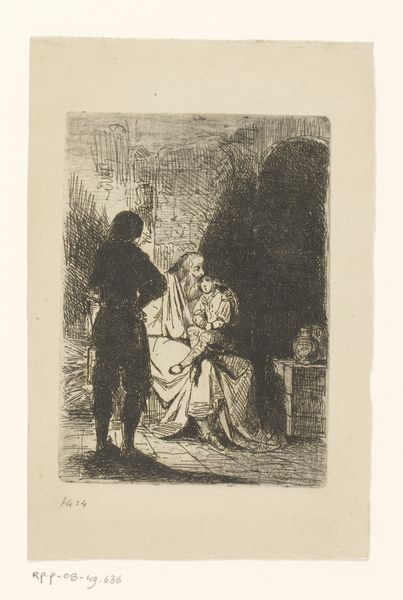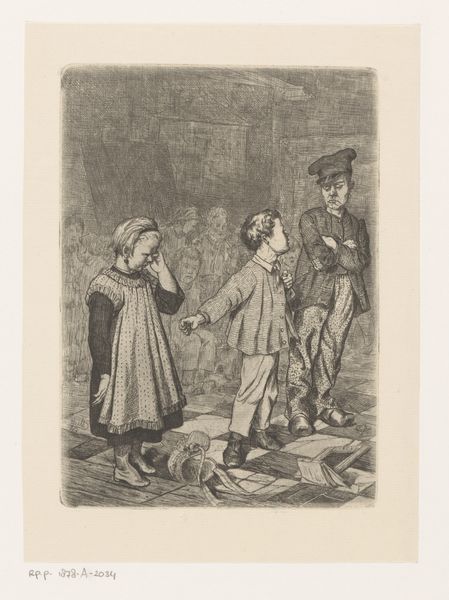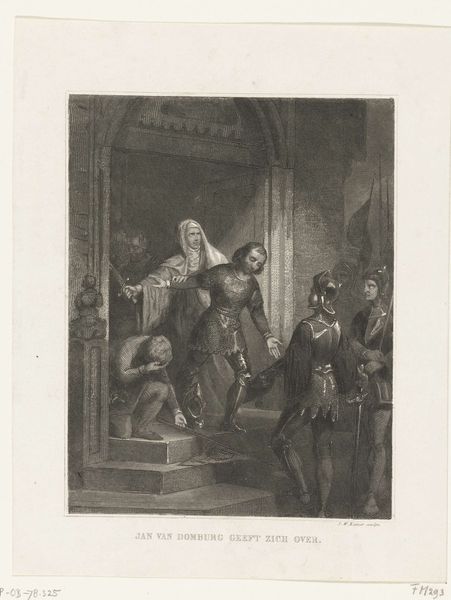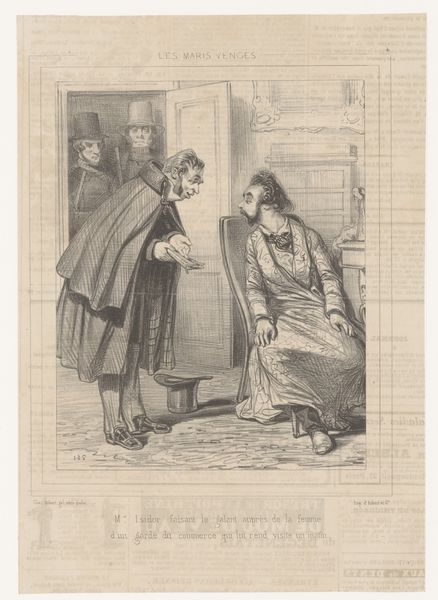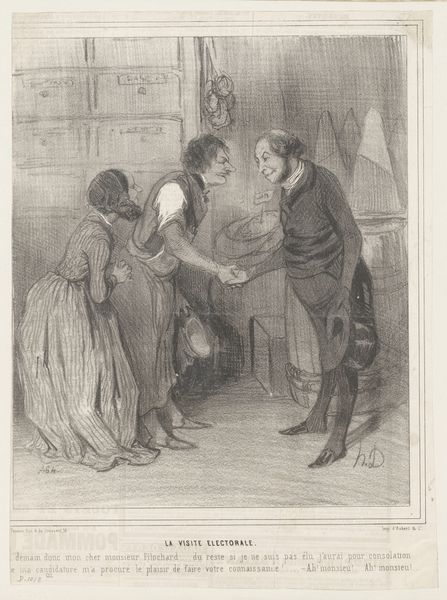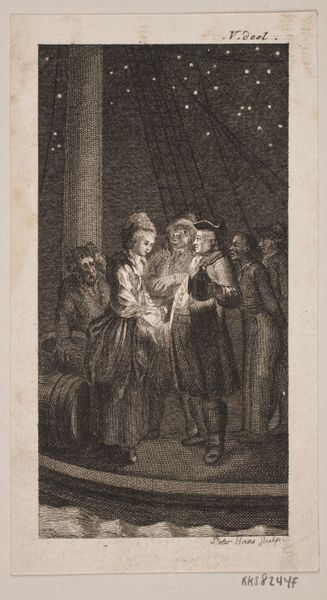
Dimensions: height 160 mm, width 119 mm
Copyright: Rijks Museum: Open Domain
Curator: I'm struck by the stark drama in this print. It looks like some kind of negotiation or farewell is occurring? Editor: That's quite right. What we have here is an engraving titled "Gezelschap in een kamer" attributed to Willem Steelink, active between 1836 and 1906. It directly translates to "Company in a Room" though it seems to depict far more than just companionship. Curator: It certainly does. The dark lines create such an intense atmosphere, emphasizing the characters’ emotions. It almost feels like a stage set; very posed, almost theatrical. I can really read so much anguish from the woman's posture. I am also interested in the gaze from the figure to the far left; he's observant but somehow excluded from the immediate interaction. Editor: Indeed. If we delve into the visual rhetoric, handshakes often signify agreement, partnership, or departure. Notice how central the handshake is in the image. I wonder, too, about the woman – her hand placed high on her chest feels like an established pose indicating deep sorrow and even perhaps regret. Curator: A visual language understood implicitly in that era. Knowing the artist was associated with Romanticism, a movement focused on intense emotion and personal experience, lends weight to that interpretation. How do you feel this work might speak to a contemporary audience? Editor: I suspect the family dynamics remain profoundly relevant, but of course social behaviors would change over the passage of time. Then the overt signaling via clothing and gesture were considered extremely important and, arguably, now such symbolism would need to be re-translated to carry equal communicative impact. Curator: True, that historical gap creates an interesting space for interpretation. I mean, consider what might have been occurring in Europe more broadly in those years, such as heightened levels of internal mobility. Do you feel this image of leave-taking invokes themes of broader population change at all? Editor: It's possible. In the Victorian era especially, social codes held great importance and influenced domestic portrayals considerably. Steelink clearly captured not just a gathering, but a carefully constructed social drama within a domestic space. Curator: It's been great to unravel this captivating little scene with you. I leave with a richer view on family history and domestic drama. Editor: Yes, I find myself reflecting on both the overt display and latent social meaning embedded within these historical images and what survives still today.
Comments
No comments
Be the first to comment and join the conversation on the ultimate creative platform.
